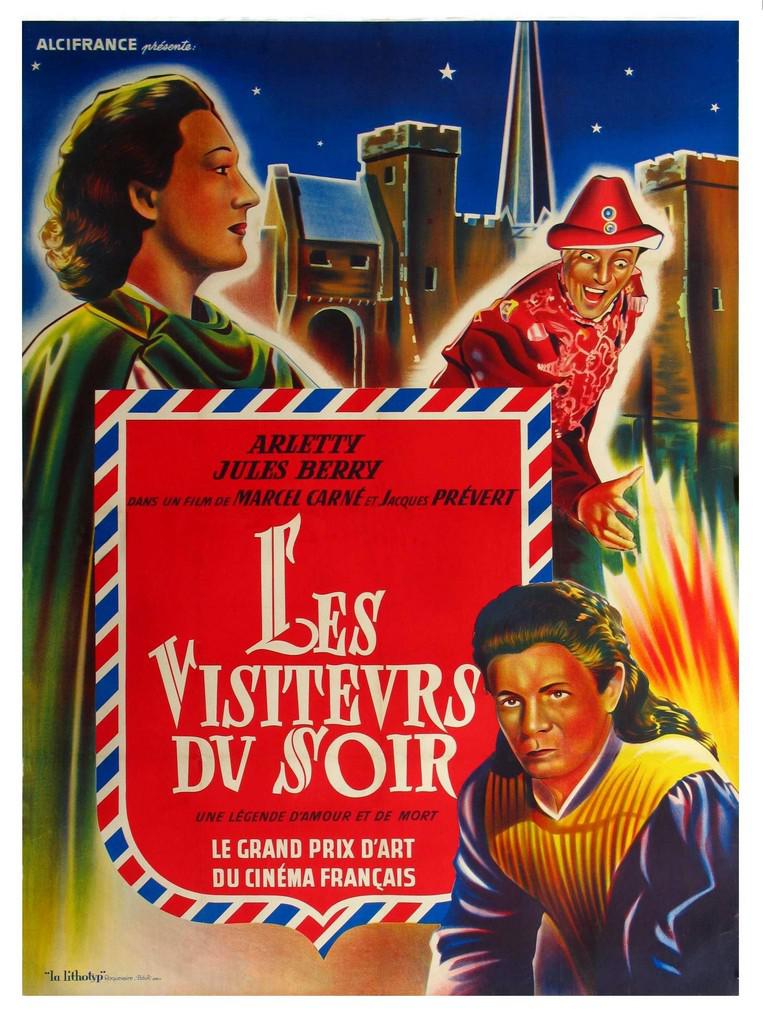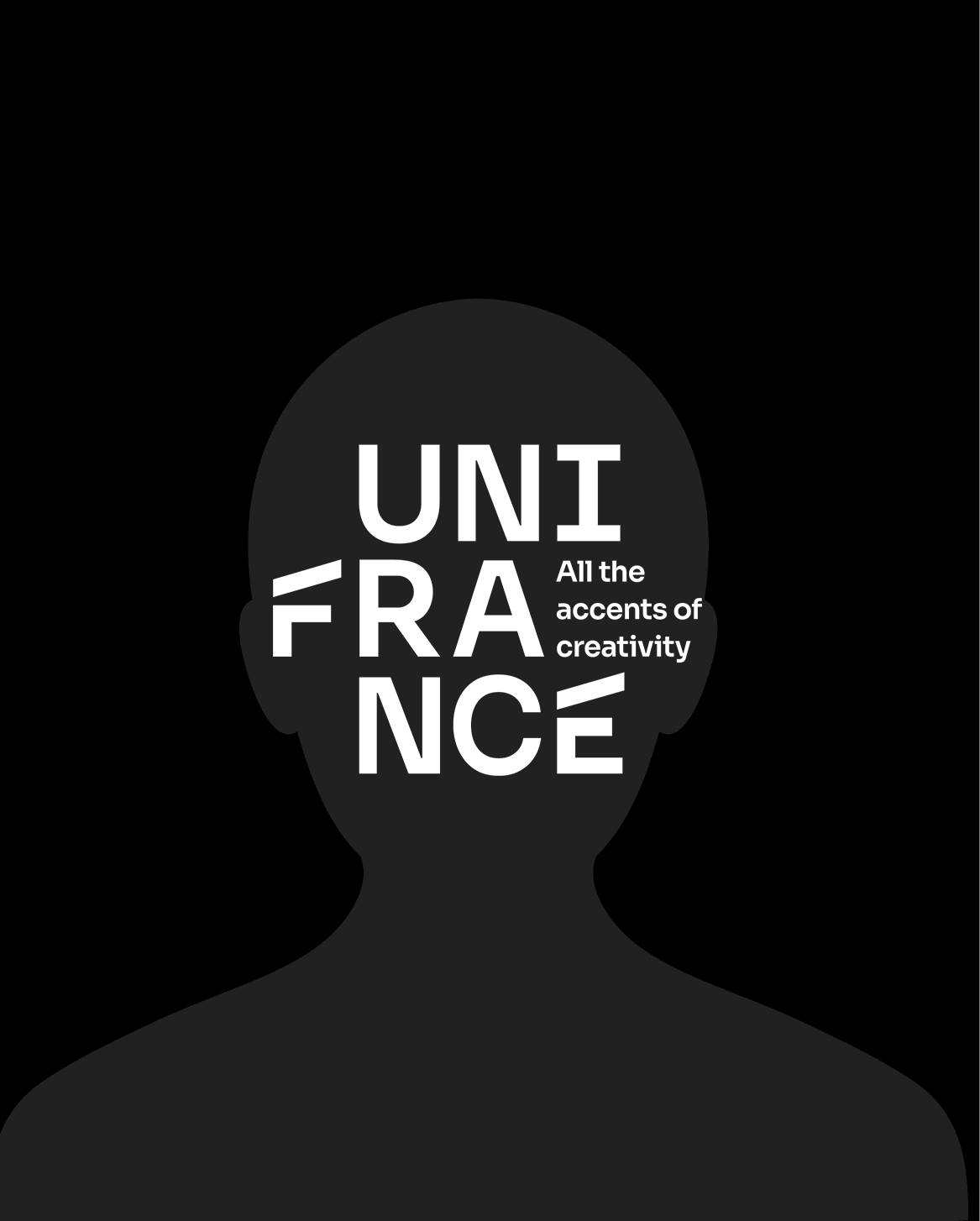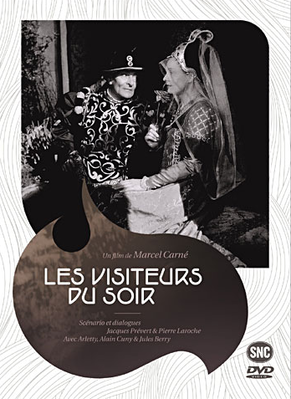あらすじ
15世紀フランス。ユーグ男爵の城でアンヌ姫(デア)と騎士ルノーの婚約の宴が催されていた。集まった旅芸人の中には、吟遊詩人に化けた悪魔の使い、ジ ル(キュニー)とドミニク(アルレッティ)の姿があった。それぞれ婚約の二人を誘惑して、この幸福を壊そうというのである。ダンスが始まって、ドミニクは 魔法を使い、ホールの人々を石のごとく固め、早速、目的を達しようとルノーに近づく。ジルもアンヌに迫るが、どうにも彼女に本気で夢中になってしまった。 これで、悪魔その人が登場。男爵もドミニクの虜となり、争奪の決闘にルノーは倒れた。そして、悪魔によって牢につながれてしまうジル。アンヌは彼を救おう と悪魔の申し出を呑んだ。釈放されたジルは記憶喪失状態だったが、アンヌと初めてキスを交わした泉の水を飲ませると、愛の記憶を呼び覚ました。しかし、そ れが悪魔の嫉妬を買い、二人は石にされて鞭打たれる。だが、その心臓は変わらず熱く鼓動している。ちょうど、ナチ占領下においても、フランス人の自由への 希望が萎えることがないように……。反ファシズムのメッセージを巧妙に溶け込ませた、カルネ=プレヴェール、黄金コンビのポエティックな中世幻想譚。この コンビの作品を支え続けたA・トローネルの美術の素晴らしさは言うまでもなく、キュニーの憂いを含んだ表情と対照的なアルレッティのコケティッシュなムー ドが軽やかに煽情的で、デアの清楚な美しさも忘れ難い。
Source : allcinema.net
クレジット
監督 (1)
俳優 (24)
映画製作・配給会社 (3)
- 製作代表 : Productions André Paulvé
- Film exports/foreign sales : SND
クレジットタイトル詳細 (12)
- Screenwriters : Jacques Prévert, Pierre Laroche
- フォトディレクター : Roger Hubert
- 作曲家 : Joseph Kosma, Maurice Thiriet
- 監督補佐 : Michelangelo Antonioni
- 編集担当 : Henri Rust
- 録音技師 : Jacques Lebreton
- Costume designer : Georges Wakhevitch
- プロデューサー : André Paulvé
- 撮影技師 : Marc Fossard
- Production managers : Georges Lampin, Emile Darbon
- 美術装飾 : Georges Wakhevitch
- 美術部長 : Alexandre Trauner
この映画を見る
Watch 悪魔が夜来る in VOD
| Platforms | Model | Price | Quality |
|---|
Sorry, your search returned no results.
| Platforms | Model | Price | Quality |
|---|
Sorry, your search returned no results.
| Platforms | Model | Price | Quality |
|---|
Sorry, your search returned no results.
| Platforms | Model | Price | Quality |
|---|
Sorry, your search returned no results.
技術面詳細
- タイプ : 長編映画
- ジャンル : フィクション
- サブジャンル : 怪奇, 哲学的物語
- テーマ : 中世, 愛, 死, 想像上の, 宗教
- 言語 : フランス語
- その他の国の共同制作者 : フランス (100.0%)
- Original French-language productions : はい
- 製作国 : 100%フランス (フランス)
- 製作年 : 1942
- フランス公開 : 05/12/1942
- 上映時間 : 2 時間
- 経過状況 : 公開済み
- ニュメロ·デ Visa : 9
- ビザ発行日 : 04/12/1942
- CNC助成 : はい
- 生産のフォーマット : 35ミリ
- カラータイプ : 白黒
- 画面セット : 1.37
- Audio format : モノラル
興行収入・公開作品
興行収入
このコンテンツは登録ユーザー専用です。
会員登録はお済みですか?コンテンツを見るにはログインしてください。
International releases
| 国 | 映画配給会社 | バイヤー | 劇場公開日 | Titre local |
|---|
Sorry, your search returned no results.
テレビ放送
このコンテンツは登録ユーザー専用です。
会員登録はお済みですか?コンテンツを見るにはログインしてください。
ニュース&アワード
映画祭でのセレクション (1)
About
The film was shot in Nice, in Vichy (France), and due to the war, Carné faced a number of difficulties in making the film. Due to the increased censorship during the war, Carné wanted to make a historical and fantastical film that would have little difficulty with the censors.
The film premiered at Paris’s Madeleine Cinema on Dec 4, 1942 and was one of the biggest film events during the war. It was called "the grandest film of the Occupation." One of the reasons that the film was such a huge success was due to murmuring before the film was released that the film was an allegory for the current situation. Many people saw the character of the Devil as representing Hitler and the continued beating hearts of the lovers as representing France living under German rule, but not giving up hope. Carné maintained until his death that the film was not an intentional allegory for the war and that any relationship was purely unconscious.
Source : Wikipedia.

























































